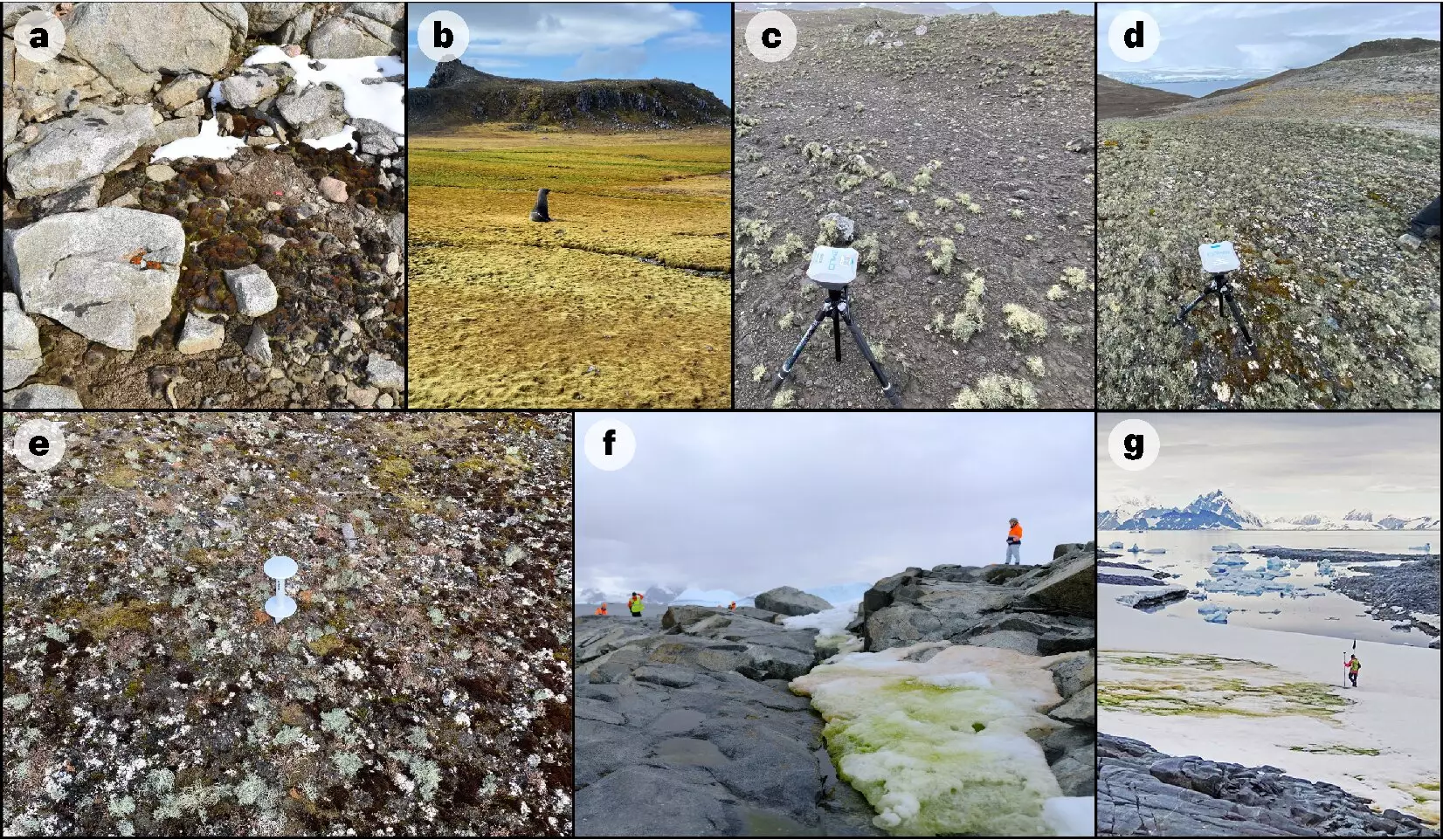The Antarctic continent, long perceived as a barren wasteland, is gradually revealing its hidden biological treasures, particularly in the realm of plant life. A groundbreaking study has emerged, marking the first comprehensive mapping of vegetation across this icy expanse. Released in the journal *Nature Geoscience*, this research has unveiled previously unknown areas of vegetative growth, particularly mosses, lichens, and algae. The findings not only reshape our understanding of Antarctic ecology but also stand to inform crucial conservation strategies as the continent faces the pressing threats of climate change.
Central to this study was an innovative approach that combined satellite imagery with extensive fieldwork conducted over several summers. A European Space Agency satellite surveyed the continent to create a detailed map of vegetative presence. The results were astonishing: nearly 45 square kilometers of vegetation were documented, a figure that astonishingly eclipses the area of Lake Windermere in the United Kingdom. This revelation underscores the importance of advanced technological solutions in ecological research, allowing scientists to achieve a scale of data collection that was previously unattainable.
The research, spearheaded by a collaborative team from the University of Edinburgh and other notable institutions, highlighted that over 80% of the identified vegetation was concentrated in the Antarctic Peninsula and adjacent islands. While this may seem insignificant in the grand scheme of the Antarctic ecosystem—representing merely 0.12% of the total ice-free area—it emphasizes the critical need for ongoing monitoring of these small yet significant zones. The current Antarctic Specially Protected Area (ASPA) system fails to adequately encompass these regions of biodiversity, which experts assert warrants immediate attention.
Antarctic vegetation, characterized mainly by resilient mosses and lichens, has evolved to withstand some of the harshest conditions on the planet. These organisms play vital roles in local carbon sequestration and nutrient recycling, signifying their importance in maintaining ecological balance. The recent mapping exercise has unveiled the extent of their spatial distribution, shedding light on how these hardy plants endure in a world of relentless cold and climate variability.
The findings reiterate that Antarctic plant life can serve as important indicators of environmental change, as these species are particularly sensitive to shifts in climate. Their responses can offer valuable insights into how similar vegetative systems around the globe, particularly in fragile ecosystems like the Arctic, may react to environmental pressures.
Dr. Claudia Colesie, one of the leading researchers, emphasized the potential implications of this research for targeted conservation strategies. With precise knowledge of where these resilient organisms thrive, conservationists can implement measures that specifically protect these crucial habitats. This is particularly urgent as climate change progresses, threatening both the integrity of these ecosystems and the species they support.
Remote sensing, as noted by Dr. Andrew Gray, is a low-impact method that facilitates continuous monitoring of changes within Antarctica’s fragile ecosystem. This approach allows for ongoing assessment of vegetation without significantly disturbing the environment, presenting a sustainable option for studying one of the planet’s last frontiers.
The comprehensive mapping of vegetation across Antarctica represents a pivotal moment in our understanding of the continent’s ecology. As researchers continue to probe into the mysteries of this icy realm, the significance of these findings cannot be overstated. They not only challenge the outdated view of Antarctica as lifeless but also pave the way for more stringent conservation efforts necessary to protect these unique forms of life. Moreover, this research serves as a crucial reminder of the delicate balance of ecosystems worldwide and the urgent need to safeguard them in the face of a rapidly changing climate. The future of Antarctic vegetation, and indeed the planet’s biodiversity, depends on our collective commitment to monitoring and protecting these vital organisms.

